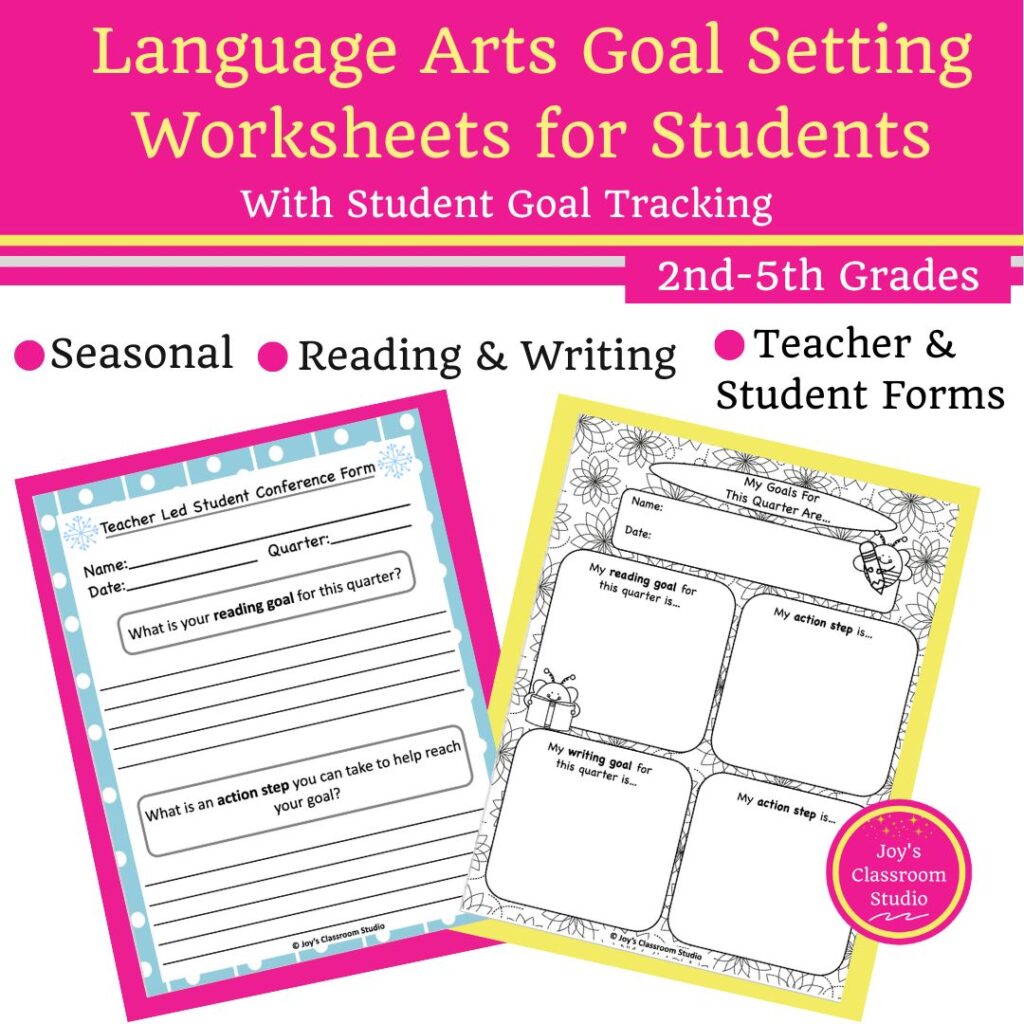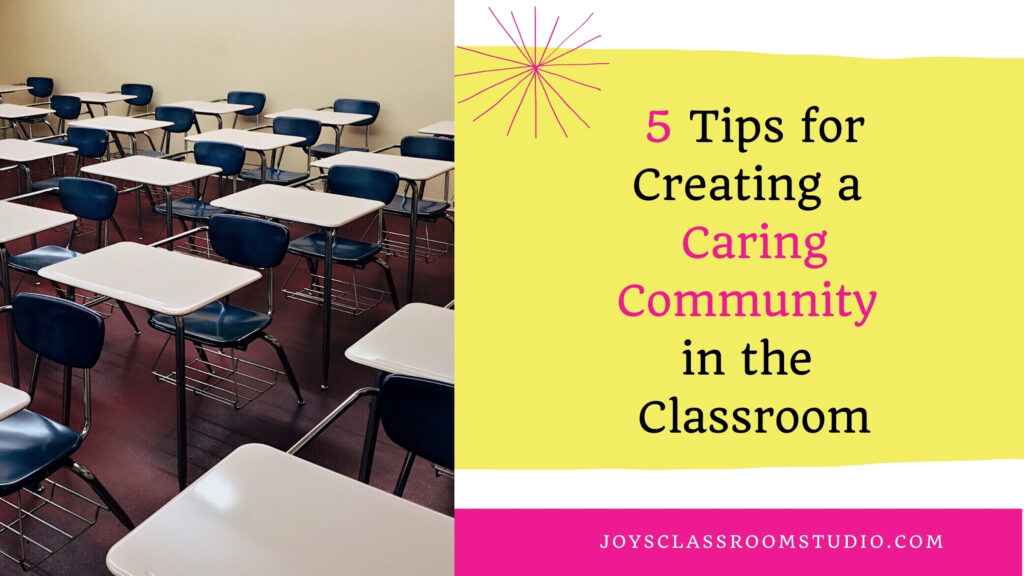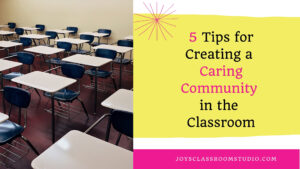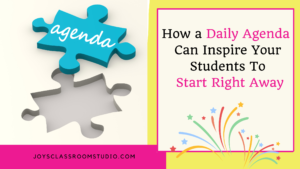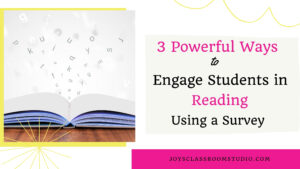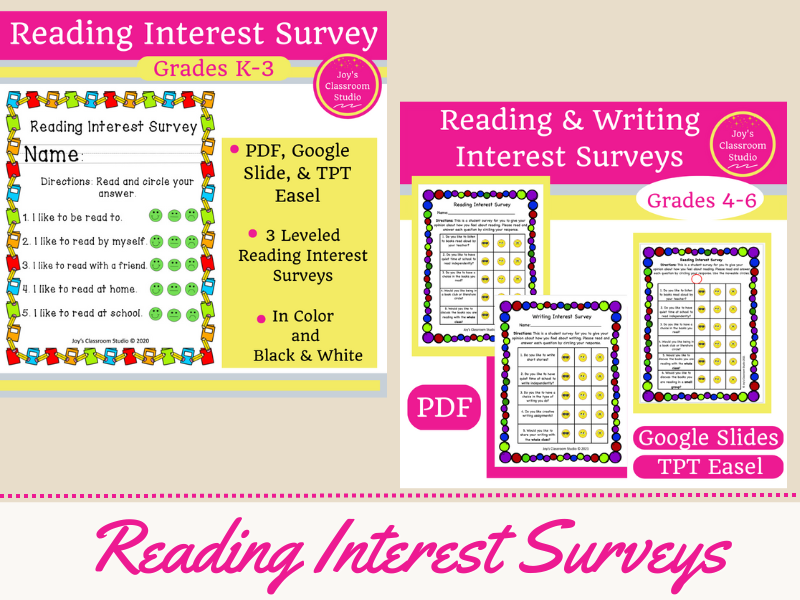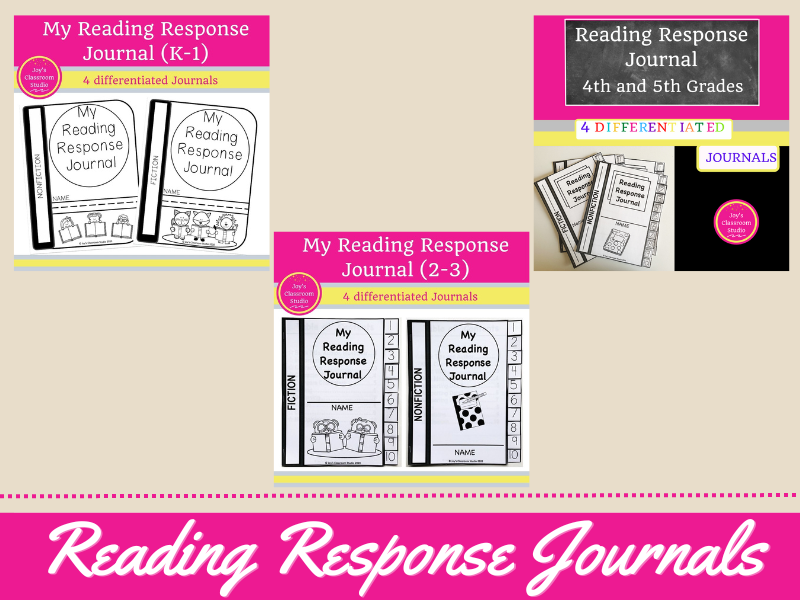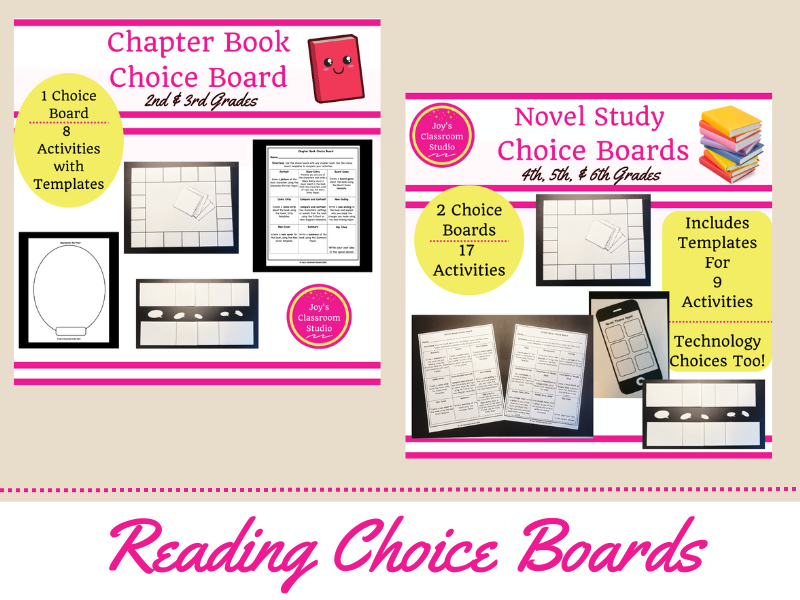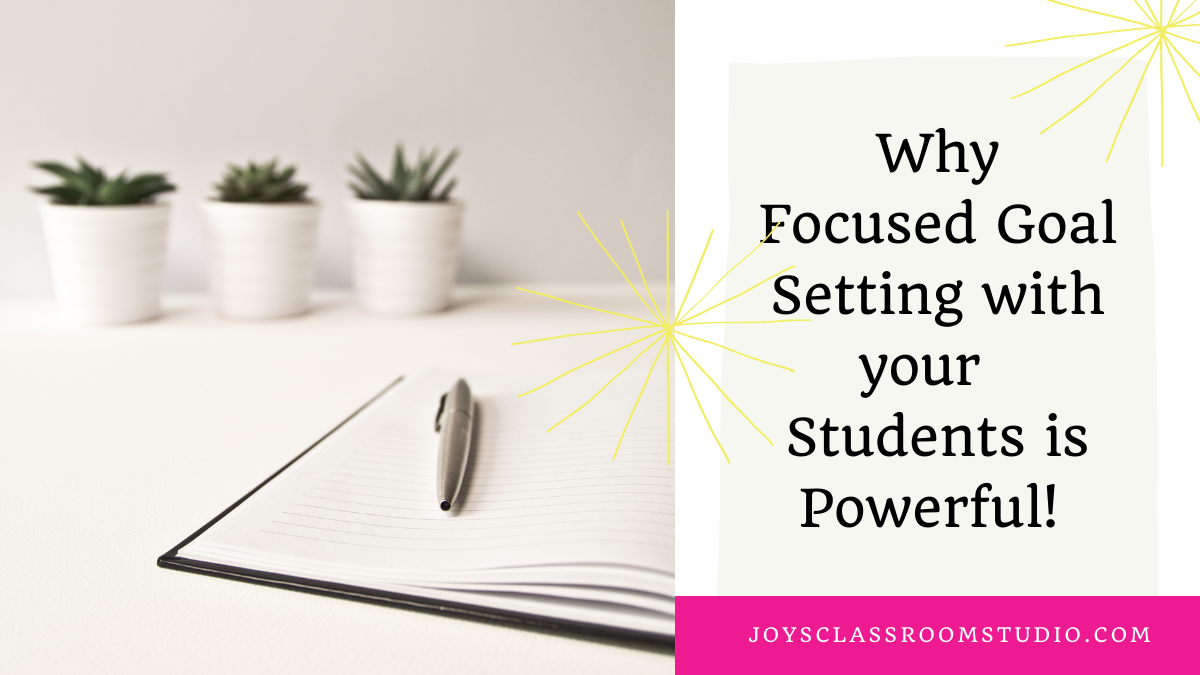
Why Focused Goal Setting With Your Students is Powerful!
Introduction
Goal setting with students is powerful! Think about it, do you set goals for yourself at the start of a new school year about what you want to accomplish? How about setting resolutions for a new year? I’m sure you do in some way or another even if you don’t formally write them down. You have your own way of keeping track of the things you want to do.
Our students also have dreams! This is why goal setting with students is so important! And you can help guide your students. What does goal setting look like in the classroom? Well, goal setting with students can be done individually in student conferences or with all students whole class.
Is goal setting with students the same as goal setting for students?
I have used goal setting with students as young as six years old. Witnessing how excited they are to make their own goals and achieve them is very rewarding! This is different than goal setting for students where you pick the goals for your students without giving them a choice. I believe in giving students choice. Yes, you will have to guide them but you want to allow them to take ownership of what they are setting out to do. Just like you would want to make your own goals and not just accept something someone created for you.
I recommend starting goal setting at the beginning of the school year, grading period, or quarter. And once you start, continue to use the same goal-setting system and process throughout the school year. In this blog post, I will focus on goal setting with students to set reading and writing goals during your reading block. I will go into detail for how to (1) set up goal setting conferences, (2) track goals, (3) check in with students, and (4) celebrate their progress.
(1) Goal Setting With Students Using Goal Setting Conferences
It all begins with the goal-setting conference! Setting goals with students helps them focus on areas they would like to work on or improve. It helps them take the ideas they have in their mind and put them on paper. Once the goal is on paper students can begin to take action. Helping students set one or two goals during your reading block focusing on reading and writing is more powerful than them creating many goals. They should make one reading goal, one writing goal, and have action steps for each goal.
How to conduct individual goal-setting conferences?
For individual goal-setting conferences, remember you are goal setting with students and not goal setting for students. Meet with each student for no longer than 5 minutes. Aim to meet with about 4 or 5 students a day during your reading block. This should take you no more than a week and a half to conference with each student. The key to being able to do this in a timely manner is to have your conference forms ready!
And I know what you are thinking. What are the other students doing while you are conferencing with one student individually? The rest of the class can read silently and work independently on reading choice boards or worksheets, or they can work at centers.
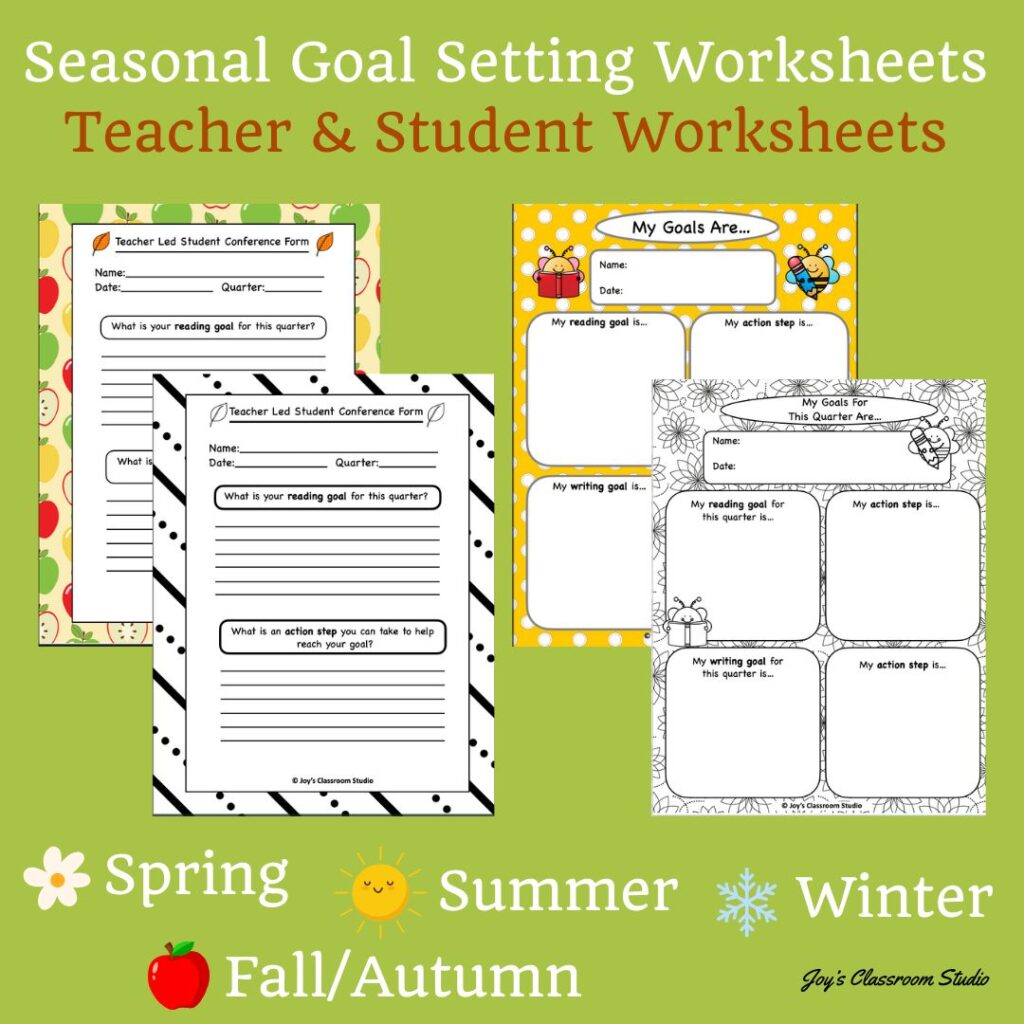
Here Are Some Example Goals With Action Steps
Reading
Goal: I will read for 30 minutes each day.
Action Step: I will put my book by my bed to read at bedtime.
Goal: I want to read a variety of books.
Action Step: This quarter I will read books from 3 different genres (fiction, mystery, and biography).
Writing
Goal: I will end each of my sentences with punctuation.
Action Step: I will reread my writing and make sure I have punctuation at the end of my sentences.
Goal: I want to add interesting words to my writing.
Action Step: I will use a thesaurus when I write.
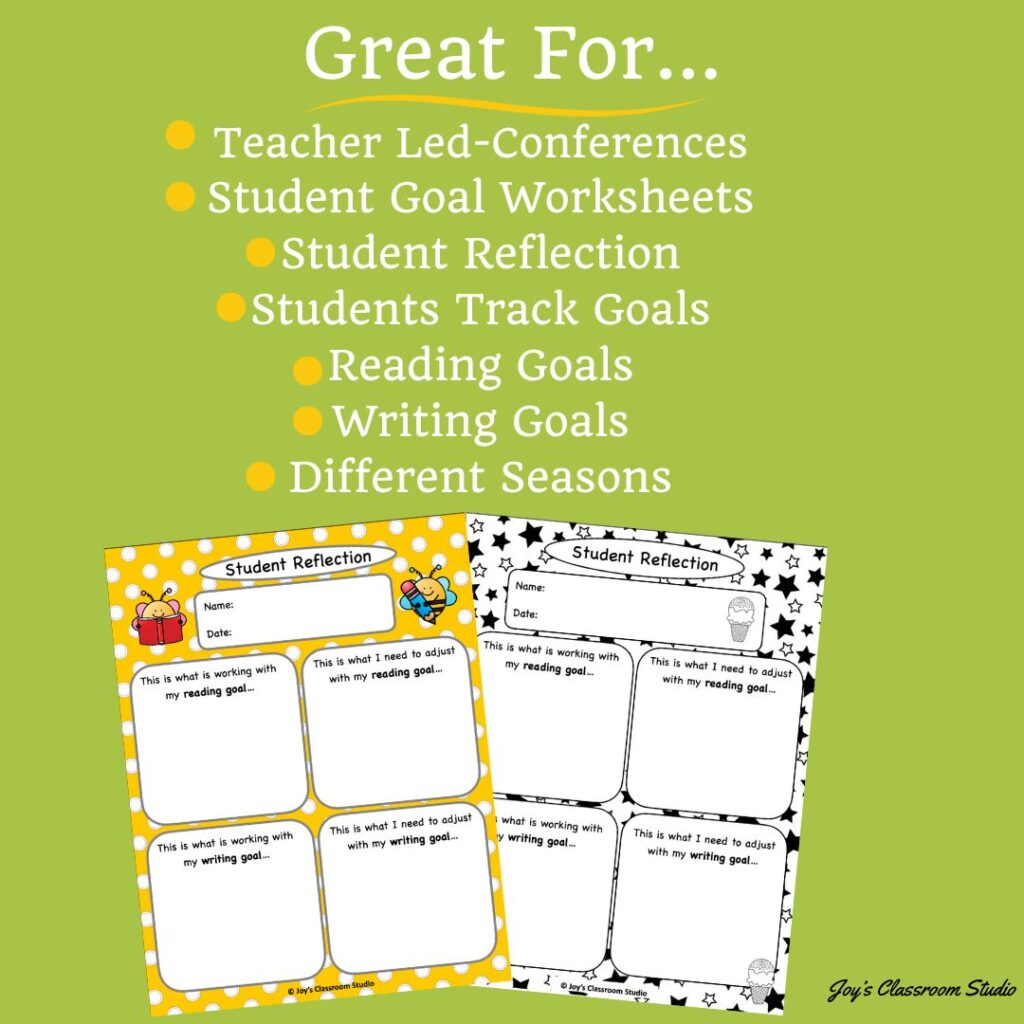
Goal Setting Conference Steps
- Students create a reading and writing goal with an action step for each goal.
- Choose a set timeframe.
- Students track goals.
4. Weekly goal setting review time for students.
- Students reflect on goals midway through their goal setting time frame.
6. Celebrate at the end of the quarter, grading period, or timeframe!
Tracking Goals As A Part Of Goal Setting With Students
Students need to track their goals to help them stay on track. Tracking goals can be very motivating! Here are three ways students can track their goals.
(1) Punch cards – Students poke a hole in a punch card each time they complete an action step toward their goals. Once they have completed a punch card, they can get a reward. Some reward suggestions are a prize from the prize box, free time, or a sit with a friend pass. Students receive a new punch card to continue to track their progress.
(2) Paper Chains- Students can add a paper chain link each time they complete an action step toward their goals. This allows them to see the progress they are making by increasing the length of the paper chain.
(3) Coloring – Students color in an item each time they complete an action step.

(3) Checking In With Students Using Goal Setting With Students
Throughout the quarter or the allotted goal time frame, have students read over their goals and action steps. It’s important for them to check-in and reflect on their goals. If students do not interact with their goals often, they can easily forget about them! This is extremely important and why you want to do goal setting with students and not goal setting for students. Lastly, have students keep their goal-setting paper with action steps in a folder or use a goal setting bookmark that they can refer to often.
Here is what this can look like in your classroom…
Have students read over their goals and action steps each week preferably on Mondays. Do this consistently to help refresh their memory of what they are working toward in reading and writing. This could be done before a reading or writing mini-lesson.
Halfway through the quarter, grading period, or allotted time frame, I recommend having students reflect on their goals and progress. You can do this whole class using a student reflection worksheet. Walk around the classroom and give students feedback about their progress. But remember, students should primarily decide what’s working with each of their goals. If students see a need for change, they can make the adjustments.
(4) Celebrating Goal Setting With Students
Celebrate once your class has come to the end of the quarter, grading period, or time frame. No matter how much progress was made, all students need to celebrate what they’ve accomplished. Rewards don’t have to be something elaborate, it could be a sticker, extra recess time, or a treat.
Conclusion
The key to goal setting with students is to stay consistent in whatever system you put in place. Make sure students create their own goals and take ownership of their action steps. I have created a product that follows this goal-setting system that I have talked about in this blog post. It was made to be used quarterly with students or any timeframe of your choice. Seasonal themes for autumn/ fall, winter, spring, and summer are included. It comes with teacher conference forms, student goal setting and action step forms, student reflection forms, and tracking systems. It can be purchased here in my store.
